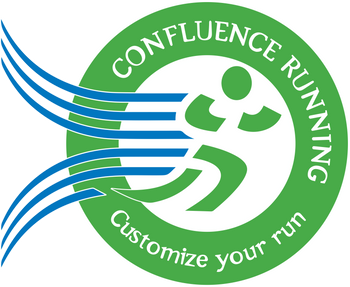Maximizing VO2 Max: Unlocking Aerobic Potential for Peak Performance

The 3 Components of VO2 Max: Unlocking Your Aerobic Potential
VO2 Max, the maximum oxygen consumption of the human body, is a critical measure of aerobic capacity and an essential determinant of athletic performance. Whether you're an endurance athlete or focused on recovery in power sports, understanding and improving VO2 Max can elevate your physical capabilities. This blog delves into the three key components of VO2 Max—oxygen capacity, oxygen transport, and oxygen utilization—and provides actionable tips for enhancing your performance through targeted training.
Explore Now: Muscular Anatomy | Concept of Overload | Pyramid Training
What is VO2 Max?
VO2 Max is defined as the maximum amount of oxygen (in milliliters) the body can use in one minute per kilogram of body weight. Often referred to as the "engine" of aerobic performance, a higher VO2 Max generally translates to improved endurance, faster recovery, and greater overall fitness. It is influenced by various factors, including genetics, training intensity, and the strength of the circulatory and respiratory systems.
The Three Components of VO2 Max
1. Oxygen Capacity (Lung Capacity)
Oxygen capacity refers to the maximum volume of air the lungs can inhale and exhale during a breath. It determines how much oxygen can enter the bloodstream for distribution to the muscles. Lung capacity can be improved through high-intensity interval training (HIIT) and specific breathing exercises. Musicians and athletes alike use techniques such as "breath stacking" to expand lung capacity over time.
2. Oxygen Transport (Circulatory Efficiency)
Oxygen transport involves the efficiency of the circulatory system in delivering oxygen to working muscles. It depends on factors like heart strength, blood volume, and the concentration of red blood cells. High-altitude training is a popular method to enhance oxygen transport, as it forces the body to adapt to thinner air by producing more red blood cells. Upon returning to lower altitudes, athletes often experience improved performance due to their enhanced ability to transport oxygen. However, methods like blood doping are unethical and illegal in sports.
3. Oxygen Utilization (Muscle Efficiency)
Oxygen utilization is the ability of muscles to extract and use oxygen for energy production. This is often the bottleneck in VO2 Max, as it varies depending on the muscles engaged in a specific activity. For example, swimmers primarily rely on their upper body muscles, while runners and cyclists emphasize the lower body. Cross-training can help improve oxygen utilization across different muscle groups.
How to Improve VO2 Max
VO2 Max can be increased through structured and progressively challenging workouts. Here are two examples of effective VO2 Max workouts:
- Interval Training: Perform 13 intervals at a fast pace (e.g., 200 meters running or 25 yards swimming). Start with 60 seconds of rest between intervals, gradually reducing rest by 5 seconds per interval until only 5 seconds of rest remain.
- High-Intensity Repetitions: Longer intervals, such as 400-800 meters running or 50-100 yards swimming, at your one-mile pace or race intensity, followed by short recovery periods.
These workouts not only improve aerobic capacity but also train your body to handle the discomfort of high-intensity effort.
Key Insights and Long-Term Benefits
As we age, VO2 Max naturally declines by approximately 1% per year. This underscores the importance of consistent training to maintain and even improve aerobic capacity. By focusing on the three components—oxygen capacity, oxygen transport, and oxygen utilization—you can create a comprehensive training plan that maximizes your performance. Whether you're a runner, swimmer, cyclist, or fitness enthusiast, incorporating VO2 Max workouts into your routine ensures you're tapping into your full aerobic potential.
Conclusion
VO2 Max is more than just a number; it’s a dynamic measure of your body's ability to perform at its peak. Understanding the three components and implementing targeted training strategies can help you improve endurance, boost recovery, and excel in your chosen sport. Start training smarter today and unlock the full potential of your aerobic capacity!
All HWS Lecture Series Links
| Lectures | Link |
|---|---|
| Mastering SMART Goals | Mastering SMART Goals |
| Concept of Overload | Concept of Overload |
| Periodization Theory | Periodization Theory |
| Muscular Anatomy | Muscular Anatomy |
| Overview of Basic Biomechanics | Overview of Basic Biomechanics |
| Metabolism and Energy Systems | TBD |
| What is VO2 Max? | What is VO2 Max? |
| Overview of Heart Rate Training Zones | TBD |
| Biological Discussion Wrap-Up | TBD |
| Dynamic Footwear Science | Dynamic Footwear Science |
| Basic Nutrition | Basic Nutrition |
| Circuit Training | Circuit Training |
| Pyramid Training | Pyramid Training |
| Compound Sets vs Supersets | Compound Sets vs Supersets |
| Myers Briggs Personality & Fitness | TBD |
| How to Improve Your Motivation in Fitness | TBD |
| Positive & Negative Reinforcement & Punishment | TBD |
| How do Plyometrics Aid in Adaptations? | How do Plyometrics Aid in Adaptations? |
| Enhance Your Fitness with Recovery Techniques | TBD |
Tags for the Secret to Improving your VO2 Max
VO2 Max training, what is VO2 Max, improving VO2 Max, oxygen capacity in fitness, oxygen transport efficiency, oxygen utilization in muscles, VO2 Max workouts, high-intensity interval training for VO2 Max, endurance training techniques, aerobic capacity explained, benefits of VO2 Max, how to increase VO2 Max, VO2 Max for runners, VO2 Max for swimmers, VO2 Max for cyclists, high-altitude training benefits, VO2 Max decline with age, fitness performance and VO2 Max, VO2 Max interval training, VO2 Max and athletic performance



